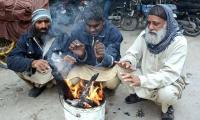Islamabad : The use of cocaine is on the rise in Pakistan particularly in the federal capital from where a significant number of cases of overdose of the drug are being reported frequently mainly at state of the art private hospitals operating here in town.
Crack or Cocaine is one of the new drugs in Pakistan and one of the most expensive illicit drugs in the federal capital. Data collected by ‘The News’ has revealed that in 2018, as many as four young males and one female student killed themselves from cocaine overdose while the data from private hospitals of Islamabad is shocking.
Only one of the major private hospitals in Islamabad (Maroof International Hospital) has received an average of over 12 patients with cocaine overdose per month in 2018 in its emergency and outpatients departments while in 2017, the number was four patients per month and in 2016, a total of 18 patients with cocaine overdose were reported at the hospital making exactly 1.5 patients a month.
The data privately arranged reveals that there is an alarming increase in cocaine abuse in the twin cities of Islamabad and Rawalpindi, said Consultant Intensive Care Medicine at Pakistan Institute of Medical Sciences and Maroof International Hospital Dr Muhammad Haroon while talking to ‘The News’.
He said there is a need to create awareness among public particularly students and parents about the deadly consequences of the use of crack or cocaine.
Cocaine users typically feel an initial burst of manic energy and confidence, verging on aggression, upon inhaling the drug. The need to sleep or eat vanishes, and one can push one’s body to otherwise impossible limits. In some cases, users do not sleep for days. The crash is even more intense, with constant cravings for the drug leading to anxiety, paranoia (an irrational and persistent feeling that people are out to get you), and in some cases, self-harm and hallucinations, explained Dr. Haroon.
He believes until the early 1990s, the drugs available to Pakistan’s elite were the same that everyone else used: hash, opium and heroin. Cocaine was something most people had only seen in movies but something started to change around 1995, when a whole generation of those who had gone to college in the West started to return. Many had become accustomed to a new lifestyle revolving around bar-hopping, clubbing and raving and they brought with them tales of a whole new range of recreational drugs. And some of them brought back the drugs as well, he said.
He added that cocaine is often mixed with other substances of abuse including heroin (“speedball”), phencyclidine, and amphetamines. Individuals combine cocaine and ethanol to achieve a more pronounced and prolonged euphoria, but this combination is more toxic than either drug alone, he said.
Toxic effects of cocaine stem from excessive central nervous system stimulation and inhibition of neuronal uptake of catecholamines. The result is generalized sympathetic over-stimulation similar to that of amphetamine intoxication. Onset and duration of symptoms depend on route of administration, dose, and patient tolerance. Smoking and manifestations include euphoria, anxiety, agitation, psychosis, and delirium, explained Dr. Haroon.
A general view of Islamabad city can be seen in this picture released on January 5, 2023. —...
People buy fish at the G-9 weekly bazaar in the federal capital as demand rises despite high white meat prices during...
Islamabad Capital Territory Police stand guard on the road of Islamabad. — AFP/FileOver the past decades,...
A group photo from the USAID’s Higher Education System Strengthening Activity's impactful four-day training on...
The picture shows Islamabad police personnel in this undated photo. — AFP/FileIslamabad : The capital city of...
Prof Ayaz Qureshi from University of Edinburgh,UK addressing an event.— Facebook@iubwp/File Islamabad : Prof Ayaz...







